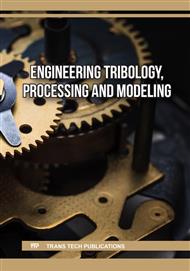p.3
p.17
p.23
p.33
p.41
p.47
p.55
p.63
Effect of Laser Surface Modification on Texture, Roughness, Wettability and Surface Energy of Hastelloy C22, C276 & X
Abstract:
Hastelloy is a nickel-chromium-molybdenum-iron-based alloy and a member of the ‘superalloy’ family. Hastelloy has exceptional properties like high strength, wear resistance and high-temperature stress-corrosion resistance. Therefore, Hastelloy is used in gas turbines, power plants, metal injection molding, etc. Many industrial applications are related to the properties of the surface. Wettability is a key surface property that affects applications like lubrication, adhesion, coating, heat conduction, etc. Laser Texturing is an excellent method to modify the surface properties of materials like metal, polymers and ceramic. In the present study, a carbon dioxide laser created unidirectional textures on Hastelloy (C22, C276, X). Different sets of unidirectional textures were formed by changing the laser power and frequency. Various roughness parameters were compared for every laser parameter. In this paper, the effective change in wettability properties of Hastelloy (C22, C276, X) after the Laser texturing process for a range of power and frequency were studied under DI water and glycerol as test fluids. Results show that the contact angle of the test fluid increases as the laser power increases, and the contact angle decreases as the laser frequency increases for all three superalloys. The surface energy of a given set of samples was also measured using the recorded contact angle of DI water and Glycerol by the OWRK equation. Similar trends were found in surface energy for all three Hastelloy.
Info:
Periodical:
Pages:
3-16
Citation:
Online since:
January 2024
Keywords:
Price:
Сopyright:
© 2024 Trans Tech Publications Ltd. All Rights Reserved
Share:
Citation:


